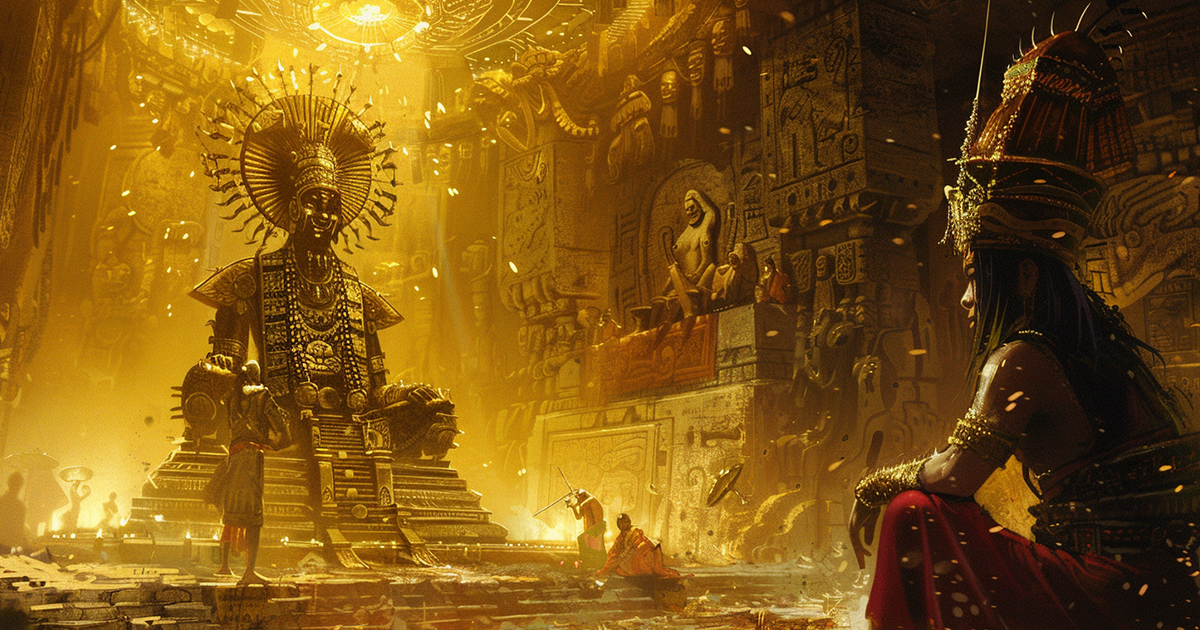In the realm of ancient history and archaeology, there exists a tapestry of enigmatic connections that often defy conventional explanation. Recent research and exploration have uncovered fascinating parallels between disparate cultures, hinting at the possibility of cross-cultural influences that spanned vast distances and epochs. In a recent investigation at the San Augustine Archaeological Park in Colombia, South America, researchers stumbled upon a curious convergence between ancient Indian and Mayan civilizations, shedding light on a phenomenon that continues to puzzle scholars and enthusiasts alike.
Led by ancient astronaut theorist David Childress and Hindu expert Prine Mohan, the exploration delved into the intriguing evidence of a potential Hindu influence in the region over 2,000 years ago. What they encountered was a revelation that challenged conventional wisdom and sparked a journey into the depths of cultural interconnection.
Central to their findings were depictions of serpentine entities guarding sacred sites, reminiscent of the revered Naga beings from Hindu mythology. These serpent-like figures, adorned with hooded features akin to cobras, bore an uncanny resemblance to counterparts found in Southeast Asian temples. The presence of such strikingly similar motifs across distant regions raises profound questions about the diffusion of cultural motifs and religious beliefs.

Further exploration unearthed references to feathered serpents in Mayan mythology, most notably Kukulkan, the feathered serpent deity. While mainstream interpretations often portray Kukulkan as a symbol of earthly and celestial forces, ancient astronaut theorists propose an alternative reading: that of a spaceman or extraterrestrial entity. They point to depictions of humanoid faces emerging from serpent mouths as evidence of advanced technology or spacecraft piloted by beings akin to Hindu Vimanas.
The concept of Vimanas, described in Hindu texts like the Mahabharata, alludes to sophisticated flying machines utilized by divine beings to traverse the heavens. Intriguingly, similar aerial vehicles have been depicted in Mayan iconography, as evidenced by gold artifacts discovered along Colombia’s Magdalena River. Among these treasures are small figurines bearing striking resemblance to modern airplanes, challenging prevailing notions of ancient technological capabilities.
In one remarkable experiment, engineers replicated the design of these ancient artifacts, embedding propellers within scaled-up models that successfully took flight. Such feats underscore the ingenuity and sophistication of ancient civilizations, prompting a reassessment of their technological prowess and cultural exchange networks.
The convergence of Hindu and Mayan iconography hints at a shared reservoir of mythic symbolism and cosmic narratives that transcended geographical boundaries. It invites us to reconsider the prevailing narratives of history, recognizing the interconnectedness of humanity’s collective heritage and the enduring mysteries that continue to captivate our imagination.
As we navigate the labyrinthine corridors of ancient history, let us remain open to the possibility of cross-cultural influences and the enigmatic threads that bind us across time and space. In exploring these parallels, we may unlock new insights into the rich tapestry of human experience and the enduring quest for meaning in the cosmos.

16 thoughts on “Exploring Cross-Cultural Mysteries: Intriguing Parallels Between Ancient Civilizations”
Comments are closed.